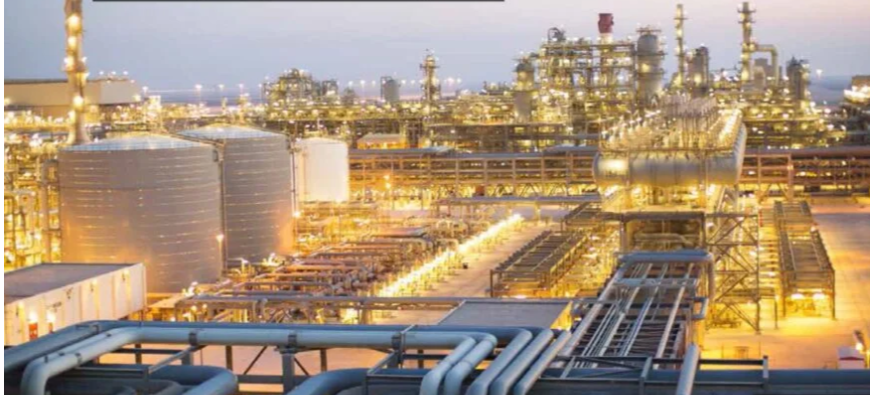Table of Contents
- What is the VT1000?
- Understanding Subzero LNG Environments
- Why the VT1000 is Essential in LNG Operations
- Key Features of the VT1000 in Subzero Conditions
- How VT1000 Operates in Extreme Cold
- Benefits of Using VT1000 in LNG Production
- VT1000 vs. Conventional Equipment
- Maintenance and Reliability in Cold Climates
- Applications of the VT1000 in LNG
- Future Trends: VT1000 and LNG Innovations
1. What is the VT1000?
The VT1000 is an advanced piece of equipment specifically engineered for extreme conditions, particularly subzero LNG environments. Built to withstand the challenges posed by freezing temperatures and remote locations, the VT1000 ensures efficient, reliable performance even in the harshest climates.
2. Understanding Subzero LNG Environments
Liquefied natural gas is produced and stored at temperatures as low as -162°C (-260°F). This subzero environment presents unique operational challenges:
- Temperature Sensitivity: Equipment must perform consistently at freezing temperatures.
- Corrosive Elements: Exposure to cold can make materials more susceptible to wear and tear.
- Logistical Constraints: Remote locations add complexity to maintenance and repairs.
Efficient equipment like the VT1000 is crucial to mitigate these challenges and ensure continuous LNG production.
3. Why the VT1000 is Essential in LNG Operations
The extreme cold of LNG environments affects not only machinery but also productivity and safety. The VT1000 is designed to:
- Optimize energy consumption under extreme cold.
- Ensure reliability in remote areas with limited support.
- Minimize downtime caused by temperature-induced malfunctions.
Without equipment like the VT1000, LNG operations would suffer from high operational costs and potential safety hazards.
4. Key Features of the VT1000 in Subzero Conditions
The VT1000 excels in subzero environments due to its unique design and engineering. Some of its key features include:
| Feature | Benefit in Subzero LNG Environment |
|---|---|
| Thermal Insulation | Prevents freezing and maintains optimal functionality |
| Corrosion-Resistant Materials | Ensures longevity even under extreme temperature variations |
| Enhanced Fluid Dynamics | Optimizes LNG flow even at subzero temperatures |
| Low-Temperature Lubrication | Reduces friction and wear, ensuring long-lasting performance |
| Remote Monitoring Capabilities | Allows operators to track performance from distant control rooms |
These features help the VT1000 function effectively in some of the most challenging environments on Earth.
5. How VT1000 Operates in Extreme Cold
The VT1000 is engineered to perform consistently, even as temperatures plunge below freezing. Here’s how it manages:
- Thermal Regulation: Advanced thermal insulation prevents vital components from freezing, ensuring that all systems continue to function normally.
- Resistant Materials: Materials used in the VT1000’s construction are chosen for their durability in low temperatures, reducing the chance of corrosion or wear.
- Precise Control Systems: The VT1000 uses smart control systems that monitor performance and adjust operations in real-time to maintain efficiency.
6. Benefits of Using VT1000 in LNG Production
The use of the VT1000 in subzero LNG environment offers several advantages:
- Increased Operational Efficiency: Its ability to function seamlessly in freezing conditions reduces downtime.
- Cost-Effective Maintenance: The robust design reduces wear, cutting down on repair costs.
- Enhanced Safety: With its reliable performance, the VT1000 minimizes operational risks, safeguarding both employees and equipment.
By addressing the specific challenges of subzero environments, the VT1000 ensures that LNG operations remain both safe and profitable.
7. VT1000 vs. Conventional Equipment
How does the VT1000 stack up against conventional equipment? Let’s take a look at some key differences:
| Aspect | VT1000 | Conventional Equipment |
|---|---|---|
| Temperature Resistance | Operates efficiently in subzero conditions | Susceptible to freezing and malfunctions |
| Durability | Corrosion-resistant materials | Prone to damage and wear in cold environments |
| Maintenance Requirements | Low due to advanced engineering | Frequent repairs needed in extreme climates |
| Energy Efficiency | Optimized for cold environments | Lower efficiency in subzero conditions |
The VT1000 outperforms conventional equipment by delivering superior results in freezing temperatures, making it a key asset for LNG operations.
8. Maintenance and Reliability in Cold Climates
Regular maintenance is essential for any equipment operating in harsh climates, but the VT1000 reduces the frequency and complexity of these tasks. Here’s why:
- Self-Regulating Systems: Automatic adjustments to temperature fluctuations ensure the machine operates at peak efficiency.
- Durable Components: Built with cold-resistant materials, the VT1000 is less prone to damage and wear.
- Remote Diagnostics: Operators can use advanced monitoring systems to detect potential issues early, minimizing the need for physical inspections.
This reduces both maintenance costs and the risk of unexpected failures.
9. Applications of the VT1000 in LNG
The VT1000 plays a critical role in several key areas of LNG production:
- Storage and Transportation: Its ability to maintain steady performance in cold environments is vital for storing and transporting LNG safely.
- LNG Liquefaction Plants: The VT1000 ensures that the liquefaction process proceeds efficiently, even in subzero conditions.
- Pipeline Operations: Used in pipelines, the VT1000 helps manage the flow of LNG, preventing blockages or freezing.
Its versatility across various stages of LNG production makes it an indispensable tool for the industry.
10. Future Trends: VT1000 and LNG Innovations
As the LNG industry evolves, so too will the technologies used within it. Some emerging trends in relation to the VT1000 include:
- Increased Automation: Future iterations of the VT1000 may feature more advanced automated systems, allowing for fully remote operations.
- Energy Optimization: With growing concerns about energy consumption, there may be enhancements to improve the VT1000’s efficiency even further.
- Environmental Impact: Innovations may also focus on reducing the carbon footprint of LNG operations, ensuring that the VT1000 remains a sustainable solution.
The future of the VT1000 is bright, with ongoing developments aimed at improving its performance and reducing operational costs in subzero environments.
Conclusion
The VT1000 has proven to be a game-changer in subzero LNG environments, thanks to its advanced engineering, durability, and ability to operate efficiently in extreme conditions. As the LNG industry continues to expand, the demand for reliable, cold-resistant equipment like the VT1000 will only grow.
For industry professionals, the VT1000 represents a vital tool for maintaining productivity and ensuring safety in the coldest corners of the globe. Its advanced features, low maintenance requirements, and efficient design make it a must-have for modern LNG operations.




